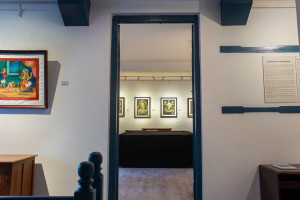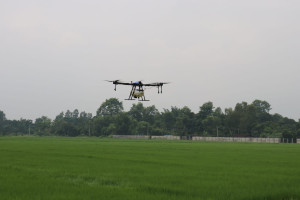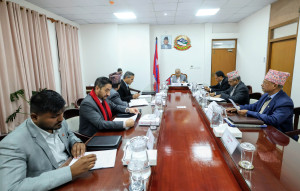Arts
These artworks invite pause and reflection
‘Here, Now, Us’ brings together seven Nepali artists, each exploring what it means to exist in this fleeting yet profound present.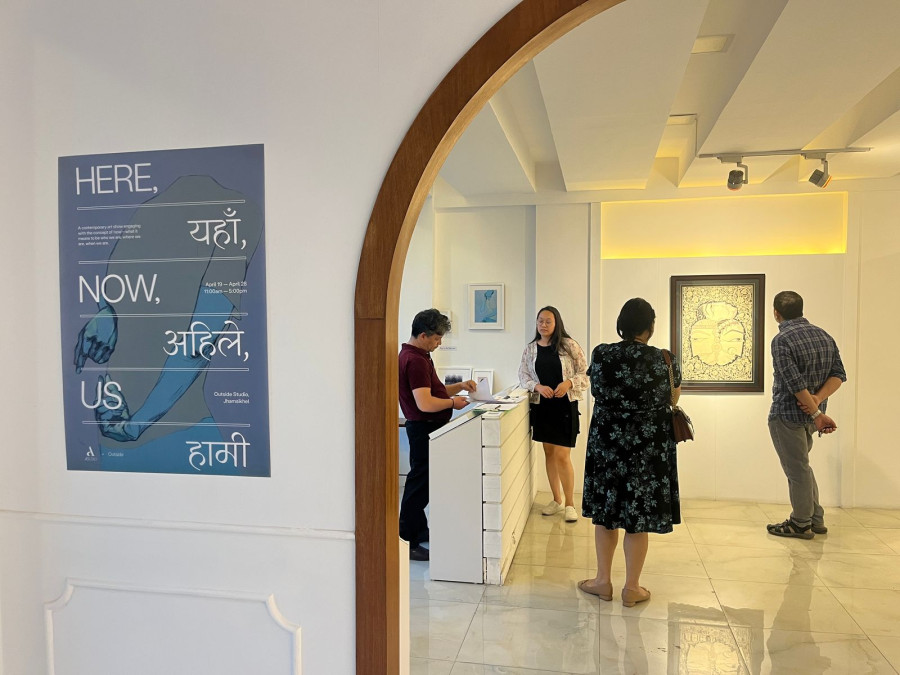
Reeva Khanal
Amid change, there’s a quiet beauty in the present moment—one that often goes unnoticed. ‘Here, Now, Us’ at Outside Studio, Jhamshikhel, brings together seven Nepali artists, each exploring what it means to exist in this fleeting yet profound present. The exhibition is taking place from April 19 to April 28. It features seven contemporary artists—Kailash K Shrestha, Krisha Tamrakar, Krismeen Lama, Mukti Singh Thapa, Niroj Bade, Rupesh Man Singh, and Suchin Takachhen Shrestha—each contributing their distinct perspective on the present moment.
Working across diverse media and cultural contexts, their works explore themes of memory, identity, and transformation. While each artist speaks in an individual voice, together they form a powerful collective dialogue that invites viewers not only to observe, but to reflect on their place within the ‘here’ and the ‘now’.
Upon entering the studio, visitors are greeted by a striking, large-scale artwork—a piece that, at first glance, may appear chaotic and scribbled, but slowly reveals layers of meaning. Titled part of his ‘Phantasmal Series’, Kailash’s work is a rich tapestry of collaborative voices and national concerns. Phrases like “Be Kind,” support for the LGBTQ+ community, promotion of Nepali products, and a nostalgic nod to the Visit Nepal 2020 campaign are scattered across the canvas, accompanied by flags of various nations, including Nepal and India, symbolising global unity.
At its centre stands a bold figure—possibly a political leader—commanding attention yet provoking questions of visibility and efficacy. Shrestha explains that this piece explores the dynamic between collective power and individual authority, built using ideas gathered from Nepali youth. The inclusion of public voices transforms the artwork into a collaborative process, rather than a singular expression. “It’s also my frustration,” he shares, “with the ongoing issues in our country. The leader is there, but not working for the people. It is present and absent at once.”
.jpeg)
Through this work, Shrestha not only critiques but also reclaims the role of art as a space for resistance, reflection, and collective consciousness.
Themes of memory, loss, and transformation emerge throughout the works featured in the exhibition. From watercolour, acrylic, and crayon to Lokta paper, photography, mandala compositions, and the delicate use of thread, the materials themselves become storytellers. Some pieces echo ritualistic traditions, while others stretch into playful, tactile improvisation—hair clips, knots, and weaves transforming into metaphors of entanglement and identity.
In collaboration with Artudio, the exhibition at Outside Studio brings together works that beautifully echo the theme of presence. Some pieces speak to our connection with land, roots, and cultural memory, while others explore the essence of human relationships and emotions. From reflections on identity to the rawness of feeling, each artwork offers a unique and meaningful interpretation of what it means to be ‘Here, Now, Us’.
Krisha Tamrakar’s contribution to the exhibition is a reflection on the evolving identity of familiar spaces. In her installation—part of her ongoing series ‘Between Colors and Spaces’—she layers traditional brass “gagri” with tangled clusters of plastic hair clips, capturing what she calls “the beauty and complexity of coexistence.” Inspired by a moment in the changing markets of Tangal, Patan, where she grew up, Tamrakar draws attention to the fragile overlap between eras, where nostalgia and transformation meet. “It’s my way of sharing what it feels like to live in that duality,” she explains, “where even something ordinary can suddenly feel profound when seen through a different lens.” She hopes to expand this dialogue by working with a wider range of utensils and imported goods in future iterations of the series.
When asked about her favourite piece at the exhibition, visitor Shreeyanka Thapa pointed to Mukti Singh Thapa’s artwork, calling it “something out of the box.” Known for reviving and reinterpreting the traditional Paubha style, Thapa blends historical iconography with bold contemporary themes. His work, a mandala creation with intricate detailing, challenges societal norms by depicting the coexistence of two genders in harmony. “It shows how these aspects of life are interconnected,” says Shreeyanka. “In a society where topics like sexual identity are often considered taboo, this piece challenges us to see the beauty in this connection.” Thapa’s mandala stands as both a visual and cultural statement, pushing boundaries while staying anchored in tradition.

Thapa’s artwork challenges societal concepts and prejudices. One of his standout pieces, a mandala, portrays two genders relying on each other in harmony within society, highlighting their interconnectedness. The piece also depicts sexual connection, a subject that, while not necessarily taboo, is often avoided in open conversation within society. Thapa’s work emphasises how everything is interconnected, showing how each element grows and nurtures the other, ultimately highlighting that everything connects us.
Niroj Bade, an artist from Bhaktapur, Nepal, draws inspiration from his roots in a historical indigenous farming community. This connection to his heritage influences his artwork.
“When I paint, I’m not just painting vegetables—I’m painting history, memory, and the identity of my community,” says Bade, reflecting on his series ‘We Become What We Grow’. “The farmland maps I use are exact replicas of our ancestral lands. They hold stories of generations that cultivated life from the soil.” He adds that the vivid crops in the foreground—rendered in ink and acrylic on traditional Nepali Lokta paper—serve as symbols of tradition, resilience, and the cultural legacy of farming communities. “It’s my way of preserving what’s being lost,” he explains, “and reminding people of the deep connection between land, labour, and identity.”
Suchin Takachhen Shrestha explores the emotional journey of loss and longing through his artwork, which portrays three dimensions of a person, each expressing different emotions. The piece reflects his experiences during a residential period, when he and others lived and worked closely, leaving behind their personal lives. He shares that it was during this time he came to realise the sense of loss and the disappointment that comes with not having something we want. Through deep self-exploration, he adds layers of complexity to his inner world, uncovering both melancholic depths and unsettling truths. His work captures the raw essence of mood and emotion, offering a powerful visual dialogue that invites viewers to engage with the fleeting nature of personal experience and the longing for what is unattainable.
‘Here, Now, Us’ is more than an exhibition—it’s a meditation on presence, memory, and meaning. While each artwork speaks through its own language of representation, together they create a shared dialogue of reflection and renewal. In a world that constantly urges us to move faster, this exhibition invites us to pause—to be fully present, to see ourselves in the now, and to consider where we are, who we are, and how we move forward together.
Here, Now, Us
Where: Outside Studio, Jhamshikhel
When: April 19 to April 28
Time: 11:00 am to 5:00 pm
Entry: Free




 18.12°C Kathmandu
18.12°C Kathmandu
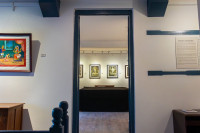
%20(1).jpg&w=200&height=120)
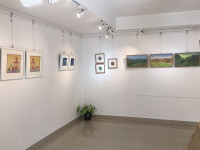

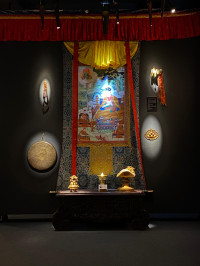
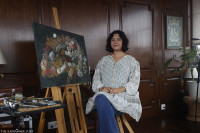
%20(1).jpg&w=300&height=200)
